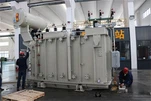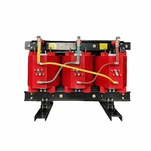When it comes to the reliability and longevity of dry-type transformers, one of the most critical factors is the insulation class. This classification determines how much heat the transformer's insulation system can safely withstand, directly affecting its performance, safety, and lifespan.
What Are Insulation Classes?
Insulation class refers to the maximum operating temperature a transformer's insulation materials can handle without degradation. Common insulation classes include:
Class A (105°C)
Class B (130°C)
Class F (155°C)
Class H (180°C)
In dry-type transformers, Class F and Class H are most widely used due to their higher thermal endurance, especially in demanding environments such as industrial plants, commercial buildings, and data centers.
Why Insulation Class Matters
Insulation class affects both thermal performance and design flexibility. Higher-class insulation allows transformers to operate at elevated temperatures without compromising safety or efficiency. This enables compact designs, improved overload capacity, and longer operational life.
For example, a transformer with Class H insulation (180°C) and a temperature rise of 125K can handle higher ambient conditions while maintaining safe internal temperatures.
Choosing the Right Class
Selecting the proper insulation class depends on factors like ambient temperature, load profile, and installation environment. Working with a qualified manufacturer ensures the transformer is correctly specified for your application, balancing cost, size, and thermal performance.
Conclusion
Understanding and choosing the right insulation class is key to optimizing the efficiency, durability, and safety of your dry-type transformer. Whether for commercial or industrial use, a transformer with the appropriate insulation rating ensures stable and long-term power delivery.










